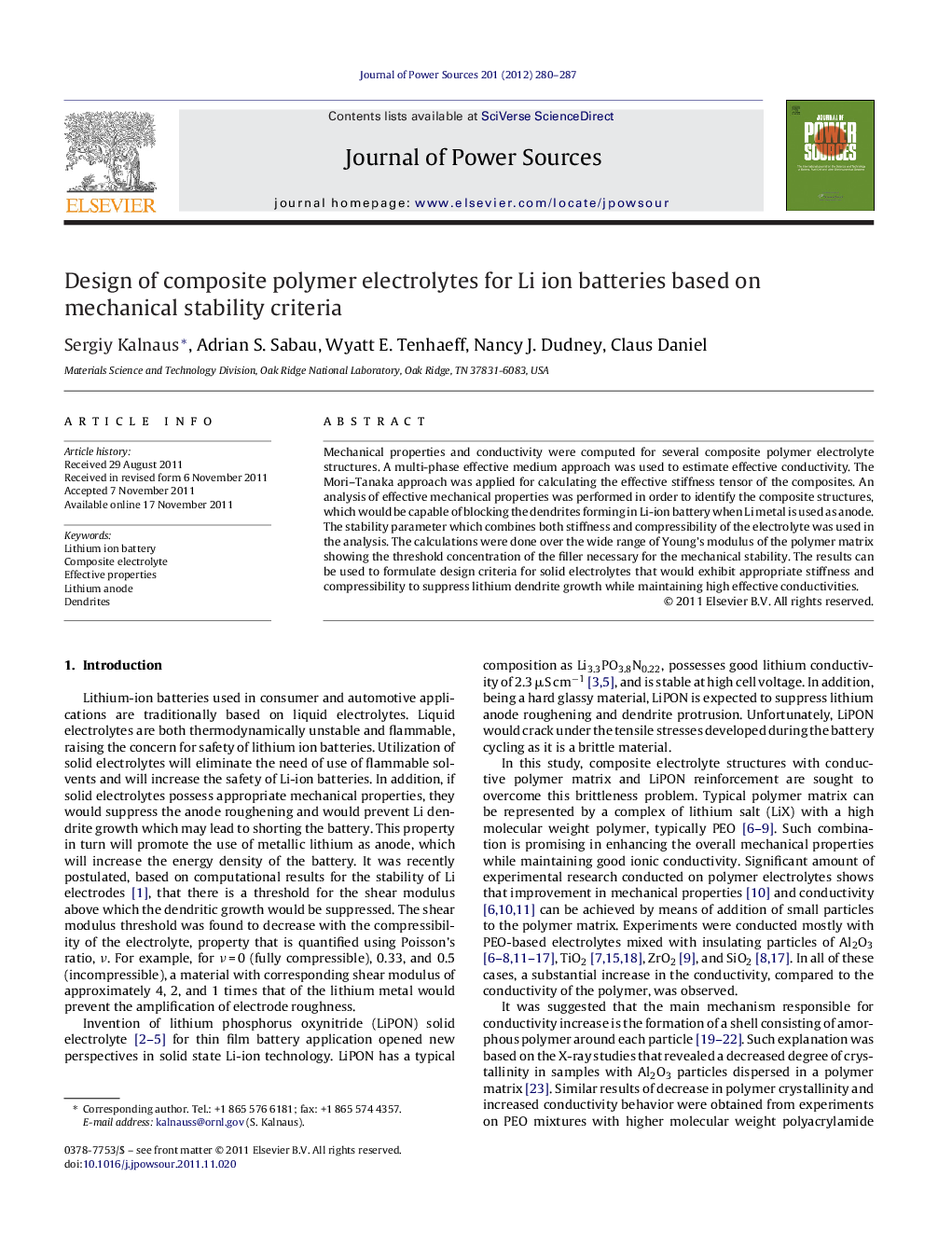| Article ID | Journal | Published Year | Pages | File Type |
|---|---|---|---|---|
| 1293202 | Journal of Power Sources | 2012 | 8 Pages |
Mechanical properties and conductivity were computed for several composite polymer electrolyte structures. A multi-phase effective medium approach was used to estimate effective conductivity. The Mori–Tanaka approach was applied for calculating the effective stiffness tensor of the composites. An analysis of effective mechanical properties was performed in order to identify the composite structures, which would be capable of blocking the dendrites forming in Li-ion battery when Li metal is used as anode. The stability parameter which combines both stiffness and compressibility of the electrolyte was used in the analysis. The calculations were done over the wide range of Young's modulus of the polymer matrix showing the threshold concentration of the filler necessary for the mechanical stability. The results can be used to formulate design criteria for solid electrolytes that would exhibit appropriate stiffness and compressibility to suppress lithium dendrite growth while maintaining high effective conductivities.
► We study effective conductivity and mechanical properties of composite electrolytes. ► We introduce a mechanical stability criterion for prevention of anode roughening. ► Critical reinforcement fractions for stability were computed. ► We propose a sandwich-type design of composite electrolyte block.
